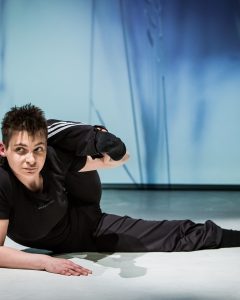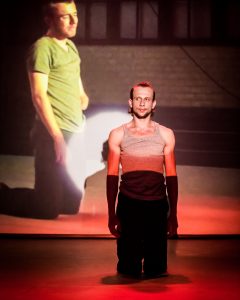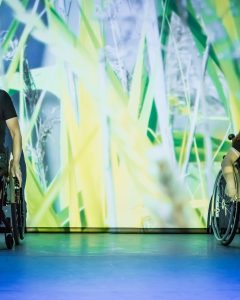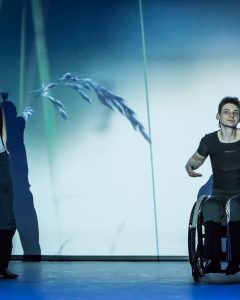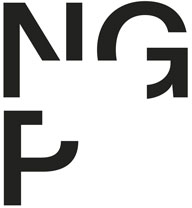Rafał Urbacki / Anu Czerwiński: Protected Species
Four dancers against the remarkable backdrop of Silesian Masuria. The choice of place is in no way random – a nature reserve, species that need government protection to survive, and young people with limited movement. The choreography, created specifically for the dancers involved in the project, poses both movement-related and acting challenges. Protected Species takes a critical look at how we perceive people with limited movement, without resorting to the common media clichés of “victim” and “superhero”.
Protected Species is a documentary and a movement performance. It a fusion of two forms, a project that discusses difference and equality without intrusive preaching. The Species are dynamic, they ceaselessly search for a language in which to speak about their different bodies, here and now, in the given natural conditions.
In Species, much like in nature, natural defense mechanisms occur. The protagonists find the truth about their bodies somewhere on the border of performance and real life. In contrast to their daily experience, the scene becomes a safe haven for them, a reserve, the only place where they can honestly, though not without fear, speak of their identity.
Initially this was a project about bodies and how one looks at them. With time, the Species became an interdisciplinary tale of identities, of looking for truth about oneself in a world not quite ready to accept us. Protected Species is a social project, which, thanks to its documentary+dance formula, opens the door to its reserve to every spectator, even the strangest ones.
PROTECTED SPECIES
The idea behind protecting species is the rule of maximum biodiversity. In a broader sense, it is not only about saving them, but also about socializing. Protected species face a particularly risk of extinction due to unfavorable external conditions and numerous incursions into their natural habitat. Species protection stems from hope that, in some generation, specimens more adapted to our climate will appear. There are many reasons for species protection: helping to adapt to an ecosystem, creating optimal conditions for a given species or for its propagation. Decision whether protection is necessary and the extent of it, requires a medical and veterinary opinion stating the biological needs and optimal living conditions for given specimens. A protected species is under legal protection of the state. Certain penalties are set in place for picking, digging out, damaging, capturing, intentional scaring and pestering, destroying its young and developing forms, destroying its shelters, dens, and nests, and other such harmful actions. Attention and caring for species, especially those under protection, is a duty of the public administration, legal entities and other organizations as well as legal persons.
ŻABIE DOŁY NATURE AND LANDSCAPE COMPLEX
The Żabie Doły conservation area, created in 1997, covers 2.262 square km. It is located in Upper Silesia, bordering the cities of Bytom, Chorzów and Piekary Śląskie. Underground mining and metal smelting has left the area covered with unused water retention pools, post-mining sinkholes, tailings and slag heaps, which have been deemed as one of more important ecological areas of Silesia in terms of bird population. At Żabie Doły, 129 species of birds have been identified, including 70 nesting species and 17 species rare in the region. What is most interesting is high density of nesting population of little bittern – the most endangered species in the region. Other bird found here are: black-necked, red-necked, and crested grebe, common chaffinch, common kestrel, common nightingale, Eurasian bittern, Eurasian nuthatch, Eurasian penduline tit, Eurasian teal, Eurasian tree sparrow, European goldfinch, great spotted woodpecker, grey partridge, long-eared owl, mute swan, northern lapwing, western marsh harrier, western yellow wagtail and white wagtail. Nesting species in Żabie Doły represent about 30 percent of all nesting species of birds in Poland.
Dancers: Tatiana Cholewa, Radosław Lis and guests
Choreography and performative actions: Rafał Urbacki
Lights: Marek Kutnik
Assistant: Marlena Hermanowicz
Concept and editing: Anu Czerwiński, Rafał Urbacki
Cinematography: Anu Czerwiński
Performed by: Tatiana Cholewa, Filip Pawlak, Karolina Stroisz, Katarzyna Szarawara
Narration: Karolina Kędziora
Project coordintion: Natalia Starowieyska
Media patronage: TVP Kultura
Production: Rozbark Theatre
Premiere: June 2014, Rozbark Theatre, Bytom
Duration: 55 min
We invite you to workshops with Rafal Urbacki – On Limited Movement (Praque, Studio Alta, 7 X 2016)
Rafał Urbacki
A director, critical choreographer, motion anthropologist. He studied, among others, drama direction at Ludwik Solski Academy for the Dramatic Arts, theatre at Jagiellonian University in Cracow, cultural studies at University of Silesia in Katowice. Interested mostly in social perception of people with alternative movement or sensory perception, archaeology of a laborer’s body, movement habitus of nonheteronormative persons. He observes the development of city microcommunities with great interest. After spending 11 years in a wheelchair, he recently has been able to move without its help by developing an original method of movement. Receiver of grants, including: Ministry of Culture and National Heritage (awarded twice), ArtStationsFoundation by Grażyna Kulczyk, Marshal of the Voivodeship of Silesia. He has been living in Katowice for the last two years. Creator of over 40 identity events, participation events, choreodocumentaries, multimedia installations and social-oriented music projects.
Anu Czerwiński
A filmmaker, focused on documentaries. Alumnus of documentary direction at Paris VII Denis Diderot, he currently studies at Wajda School Foundation in Warsaw. His first feature, Kalambury, has met with appreciation at French film festivals (Chéris-Chéries, Paris; FIPA, Biarritz; PiontDoc Paris). As a moviemaker he cooperated with French theaters, including: Opéra de Paris, Théatre Artistic Athévains, Théatres Parisiens Associées, creating multimedia design and documentation material.
